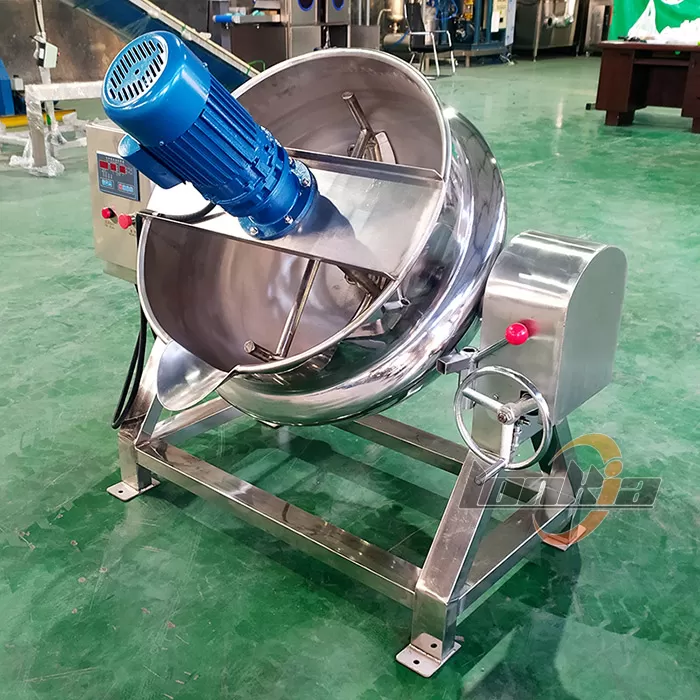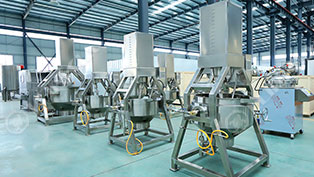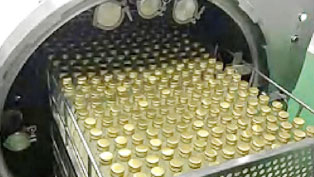When it comes to commercial food production, one of the most essential pieces of equipment is the jacketed kettle pot. Whether you’re cooking sauces, soups, or confectionery, a jacketed kettle pot can significantly improve cooking efficiency and consistency. However, with numerous options available in the market, choosing the right one for your business can be overwhelming. This article will walk you through the key considerations to make when buying a jacketed kettle pot, ensuring you make an informed decision that suits your production needs.
1. Size and Capacity
The size and capacity of the jacketed kettle pot are crucial factors to consider when purchasing the equipment. The capacity should be tailored to your business’s production needs, whether you’re cooking small batches or large volumes of food.
Small Businesses: If you’re running a restaurant or a small-scale production facility, you’ll need a smaller kettle with a capacity between 10-50 gallons.
Larger Operations: For larger food production plants or catering businesses, you may need a jacketed kettle pot with a capacity of 100 gallons or more.
Tip: Always consider future growth. Purchasing a kettle that is too small for your business’s needs could lead to bottlenecks, while a kettle that is too large may result in wasted energy and space.
2. Material and Durability
Jacketed kettle pots are usually made from stainless steel, which is highly durable, resistant to corrosion, and easy to clean. Stainless steel also ensures that the pot can withstand high temperatures and maintain food quality.
304 Stainless Steel: This is the most common material used for jacketed kettle pots because it’s highly resistant to rust and corrosion and is considered food-safe.
316 Stainless Steel: For highly acidic or corrosive foods, look for jacketed kettle pots made from 316 stainless steel, which offers superior corrosion resistance.
Tip: Ensure the kettle you purchase is made from high-quality, food-grade stainless steel to ensure durability and safety in food production.

3. Heating System
The heating system is one of the most important features of a jacketed kettle pot. The kettle’s jacket is designed to heat the food indirectly using steam, oil, or electric heating, depending on the model.
Steam-Jacketed Kettles: Steam is the most common and cost-effective heating method. It provides even heat distribution, ensuring that the food is cooked without burning or scorching.
Electric or Oil-Jacketed Kettles: These systems are ideal for precise temperature control and are commonly used in the production of sauces, candies, and confections.
Tip: Consider your food production needs. Steam-jacketed kettles are the most common and versatile, but if your business requires more precise control or uses specialized ingredients, an electric or oil-jacketed kettle may be the better choice.
4. Agitation and Mixing Features
Many jacketed kettle pots come with agitation systems that help mix the ingredients while cooking, ensuring uniform consistency. The type of agitation system will depend on the specific kettle design.
Planetary Agitators: Ideal for mixing thicker products like sauces, custards, or jams. The planetary motion ensures thorough mixing without damaging the food.
Scrape Surface Agitators: These are perfect for high-viscosity products like caramel or confections. The scraper continuously stirs the food while preventing it from sticking to the sides.
Tip: Assess the type of food your business produces to determine the best agitation system. For example, a planetary agitator would be a great choice for sauces, while a scrape surface agitator is ideal for thicker products.
5. Temperature Control and Monitoring
Precise temperature control is essential for many cooking processes, especially in commercial food production. Jacketed kettle pots come with various temperature control features, such as thermostats or digital temperature controls.
Manual Thermostat: Allows basic temperature control but may require constant monitoring.
Digital Temperature Controls: Provide more accuracy and are ideal for businesses that require precise cooking temperatures for consistency in product quality.
Tip: For businesses that need precise temperature control, digital or programmable temperature control systems are worth the investment. They help ensure consistency in product quality and reduce the risk of overcooking or undercooking.
6. Ease of Cleaning and Maintenance
Cleaning and maintaining a jacketed kettle pot is essential to ensure long-term operation and prevent contamination. Look for kettle pots that are easy to clean and maintain.
Smooth Interior Surfaces: The inside of the kettle should be smooth and free from seams where food particles can get trapped.
Tilt Mechanism: A kettle with a tilt feature allows for easy emptying and cleaning, especially when dealing with heavy or sticky foods.
Removable Parts: Removable parts, such as agitators and lids, make cleaning and maintenance more convenient.
Tip: Consider the maintenance and cleaning process, especially if your business operates on a large scale. Regular cleaning ensures food safety and extends the lifespan of the kettle.
7. Price and Budget
The price of a jacketed kettle pot can vary significantly depending on the size, material, and features. It’s important to balance your budget with the features that are essential to your business.
Entry-Level Models: Smaller, simpler kettles with basic features are typically less expensive but may lack some of the advanced features necessary for high-volume production.
High-End Models: These often come with advanced features like automated agitation, programmable controls, and high capacity. While more expensive, they can save time and increase production efficiency in the long run.
Tip: Focus on the features that are most important for your business. While it’s tempting to go for the cheapest option, investing in a higher-quality kettle may save you money in the long term by improving efficiency and reducing downtime.
8. Energy Efficiency
Energy efficiency is another critical factor to consider, especially for businesses concerned with operating costs. A more energy-efficient jacketed kettle will reduce your long-term operational expenses.
Steam Heating: Generally more energy-efficient for large-scale production.
Electric and Oil Heating: May be more energy-intensive, especially for smaller operations.
Tip: Look for models that are designed to maximize energy efficiency, which will help reduce your operating costs over time.
Conclusion
Choosing the right jacketed kettle pot is a crucial decision for any food business looking to improve cooking efficiency, consistency, and quality. By considering factors such as size, material, heating system, agitation features, temperature control, cleaning ease, price, and energy efficiency, you can make an informed decision that best suits your business’s needs. With the right kettle, you’ll enhance your production processes, reduce operational costs, and ultimately deliver better products to your customers.



